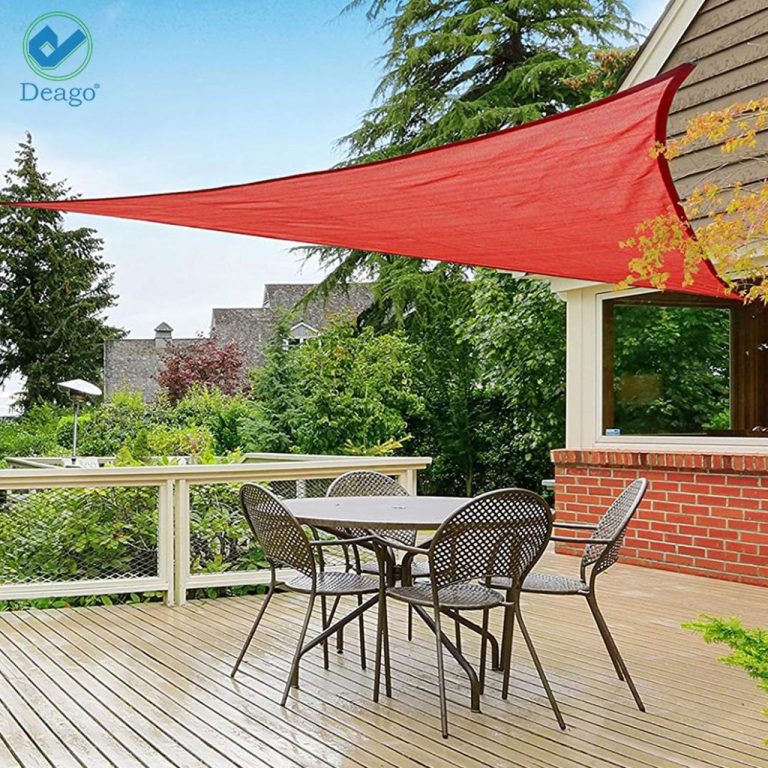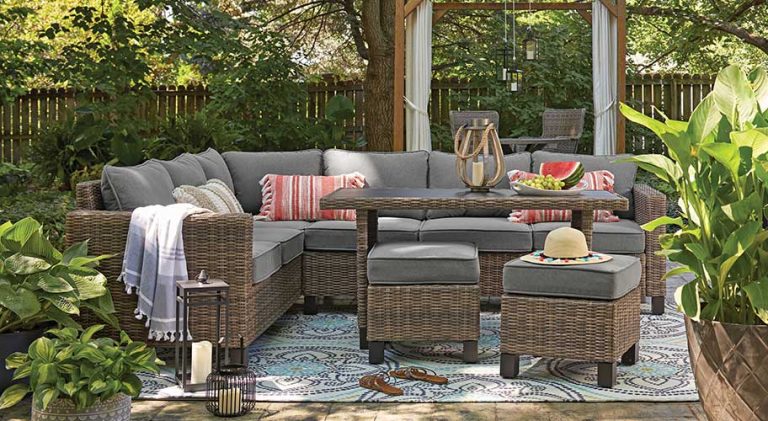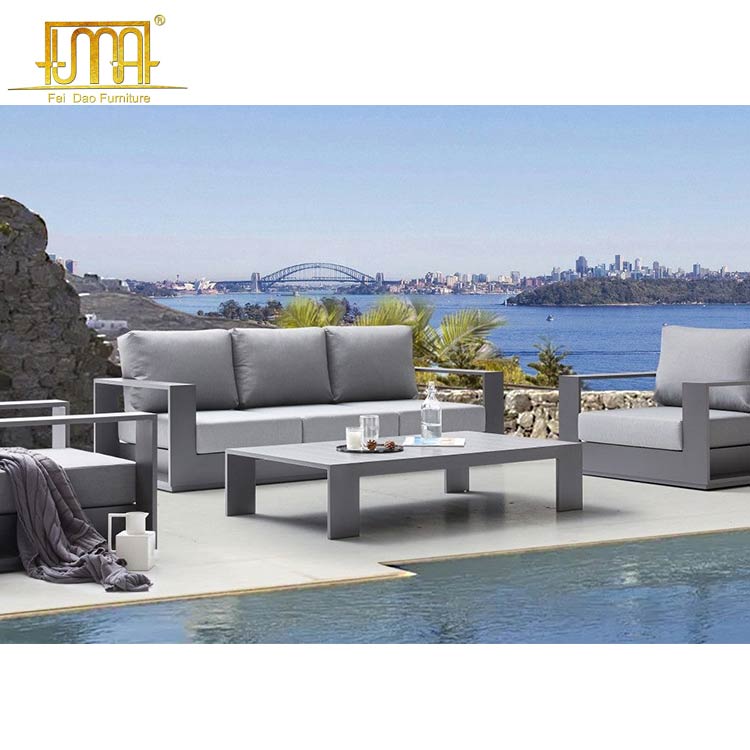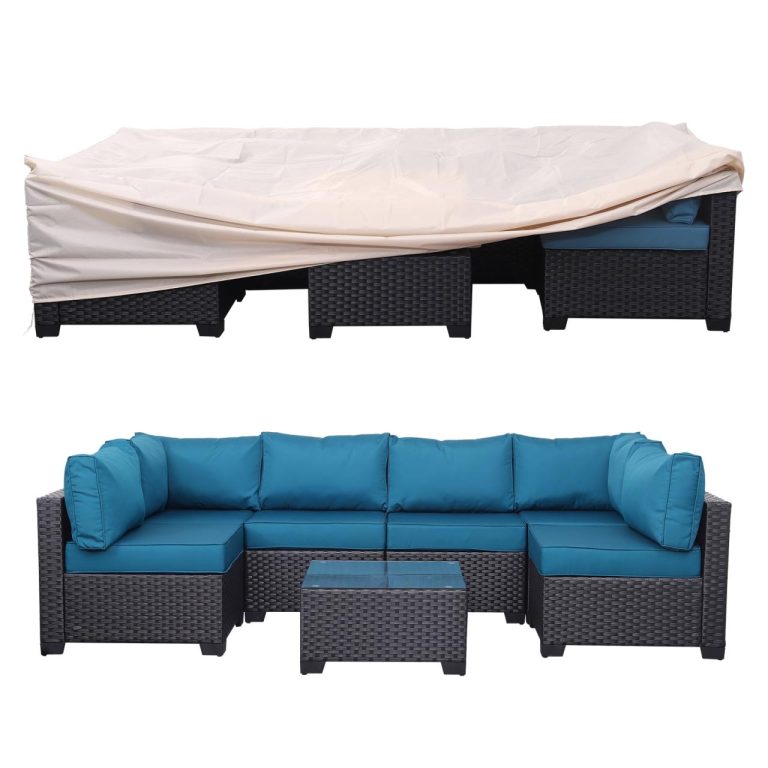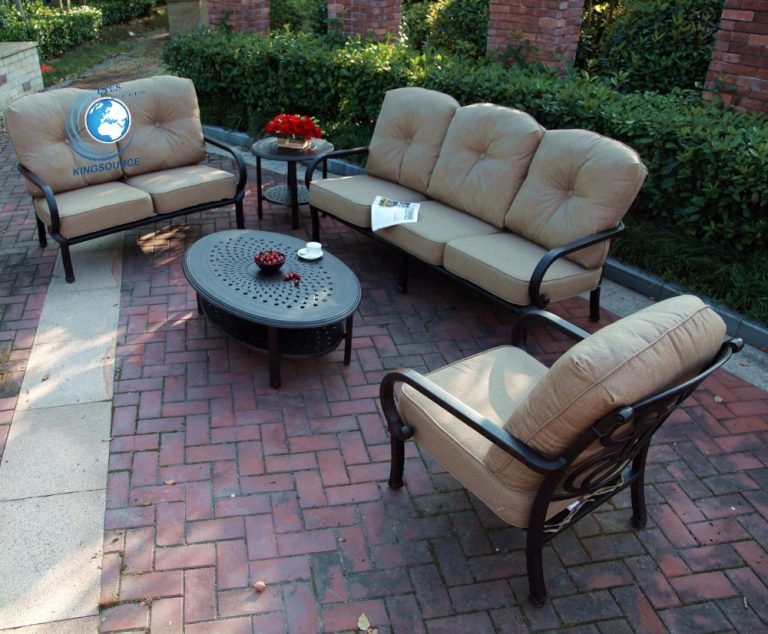Rust Resistant Patio Table and Chairs A Guide
Rust resistant patio table and chairs are a smart investment for outdoor living spaces. This guide dives deep into the materials, design, and maintenance strategies crucial for keeping your patio furniture looking great year after year. We’ll explore everything from choosing the right materials to understanding effective cleaning techniques to ensure your patio furniture withstands the elements.
From aluminum’s lightweight strength to the timeless appeal of teak, we’ll compare various materials, highlighting their pros and cons in terms of rust resistance, durability, and maintenance. We’ll also examine key design elements that minimize rust risks, such as optimal drainage and specialized joining techniques. Finally, we’ll provide practical maintenance tips for keeping your furniture in pristine condition.
Material Comparisons
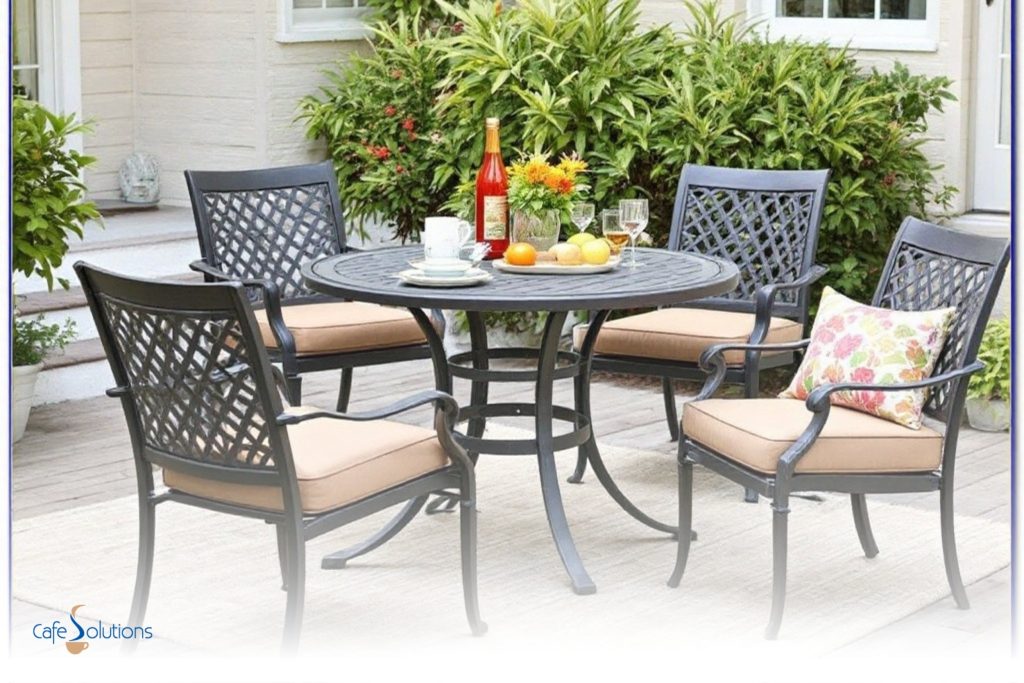
Choosing the right material for rust-resistant patio furniture is crucial for longevity and aesthetic appeal. Different materials offer varying levels of resistance to the elements, durability, and maintenance requirements. This section delves into the comparative advantages and disadvantages of popular options, including aluminum, stainless steel, teak, and composite materials, to assist in making informed decisions.
Material Properties
Various materials exhibit unique characteristics regarding rust resistance, durability, and maintenance. Understanding these properties is essential for selecting the ideal material for your patio furniture.
- Aluminum: Aluminum patio furniture is highly resistant to rust due to its inherent chemical properties. It’s lightweight, making it easy to move and maneuver, and relatively affordable. However, aluminum can be susceptible to dents and scratches, and its finish may fade over time. Powder coating or anodizing can enhance its durability and resistance to the elements. Aluminum furniture requires minimal maintenance, primarily involving occasional cleaning with mild soap and water.
- Stainless Steel: Stainless steel is renowned for its exceptional rust resistance, stemming from its chromium content. It’s highly durable and can withstand harsh weather conditions. However, stainless steel is significantly more expensive than aluminum and can be heavy, impacting ease of movement. Proper cleaning and occasional polishing can maintain its aesthetic appeal. Stainless steel is known for its long lifespan, but the higher initial cost may be a significant factor.
- Teak: Teak wood, known for its natural oils, offers inherent resistance to rot and decay. It’s aesthetically pleasing and can add a warm, natural touch to any outdoor space. However, teak requires regular oiling and maintenance to prevent cracking and splintering. This maintenance, while necessary for long-term durability, can be more demanding than other materials. The cost of teak furniture is generally higher due to its durability and natural beauty. Teak’s longevity and rustic charm make it a desirable choice for those seeking a classic aesthetic.
- Composite Materials: Composite materials, typically a blend of recycled plastic and wood fibers, offer a balance between affordability and durability. They are generally resistant to rust and rot, and their low maintenance requirements make them appealing. However, the long-term durability of composite materials can vary depending on the specific manufacturer and quality of the composite blend. Color retention can also be an issue in some composite materials. Composite materials are gaining popularity due to their resistance to weathering and low maintenance.
Material Comparison Table, Rust-resistant patio table, and chairs
| Material | Lifespan (Years) | Maintenance Requirements | Environmental Impact |
|---|---|---|---|
| Aluminum | 10-15 | Low (occasional cleaning) | Moderate (recyclable) |
| Stainless Steel | 20+ | Moderate (cleaning & polishing) | High (manufacturing energy) |
| Teak | 20+ | High (regular oiling) | Moderate (sustainable harvesting practices vary) |
| Composite | 10-20 | Low (occasional cleaning) | Moderate (recycled content, manufacturing energy) |
Chemical Treatments and Coatings
Various chemical treatments and coatings are applied to enhance the rust resistance of different materials. For instance, aluminum furniture often receives powder coatings, which provide a protective barrier against corrosion. Similarly, stainless steel’s inherent resistance to rust is enhanced by the chromium content within the metal’s composition. Teak wood naturally contains oils that provide resistance to rot and decay, but additional oiling strengthens this protection. Composite materials may incorporate specific additives to further enhance their resistance to weathering.
Climate Considerations
The choice of material should also consider the local climate. Areas with high humidity or significant temperature fluctuations might require materials that are more resistant to moisture damage. For instance, teak, despite its inherent resistance to rot, might need more frequent maintenance in extremely humid environments. Similarly, composite materials may be more susceptible to fading in regions with intense UV exposure. Thorough consideration of local climate conditions is essential when selecting patio furniture materials.
Design Considerations for Rust Resistance: Rust-Resistant Patio Table and Chairs
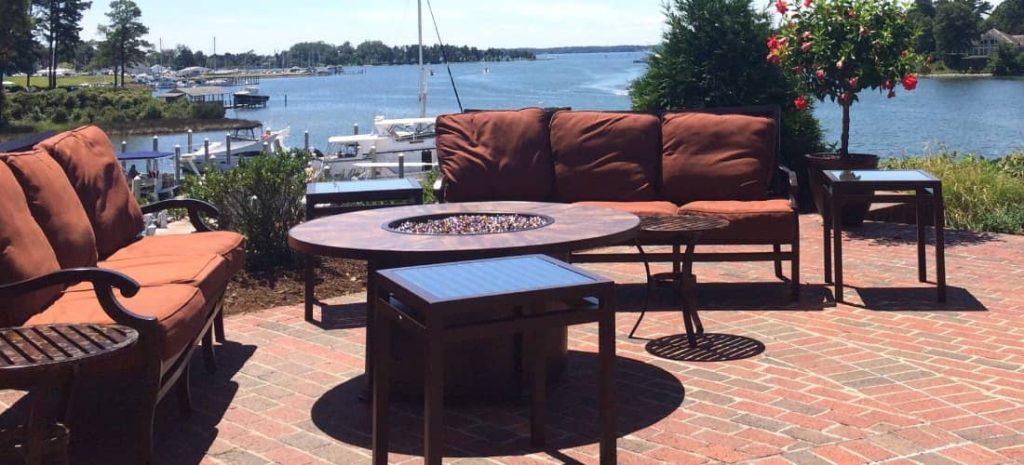
Designing rust-resistant patio furniture requires careful consideration of materials, construction techniques, and environmental factors. The longevity and aesthetic appeal of outdoor furniture are significantly impacted by the chosen design elements. A proactive approach to rust prevention translates to lower maintenance needs and a longer lifespan for the furniture.
Effective rust resistance in patio furniture hinges on minimizing contact with moisture and employing materials and construction methods that resist corrosion. This includes selecting materials with inherent rust resistance, employing appropriate joining techniques, and strategically shaping the furniture to promote water drainage. By prioritizing these design aspects, the durability and aesthetic value of the furniture are enhanced.
Joining Techniques for Rust Prevention
Joining techniques directly affect the susceptibility of patio furniture to rust. Welding, while strong, can create areas where moisture can accumulate, increasing the risk of corrosion. For this reason, other techniques that reduce the possibility of moisture retention are crucial. Bolted connections, using corrosion-resistant fasteners, are an effective alternative, offering a secure joint with fewer points of vulnerability. Additionally, using stainless steel or galvanized steel fasteners ensures that the connection points resist rust and provide superior durability.
Shape and Geometry for Moisture Management
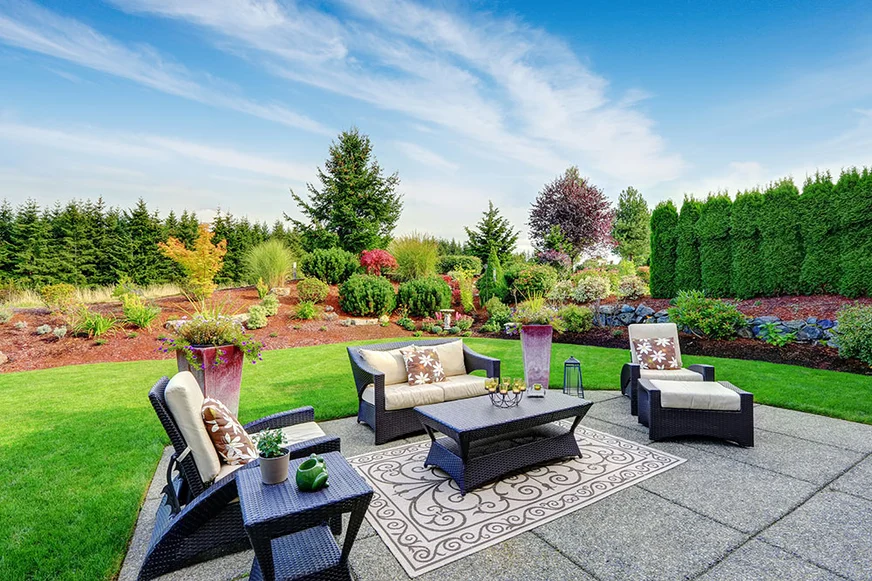
The shape and geometry of patio furniture play a critical role in preventing moisture accumulation. Careful design considerations can enhance water drainage, reducing the likelihood of rust. Furniture with sloped surfaces or recessed areas allows water to run off easily, preventing it from pooling and creating damp environments. Rounded edges and smooth surfaces minimize crevices where water can collect, thus lowering the risk of corrosion. This design approach is vital for environments prone to rainfall or humidity.
Innovative Designs for Enhanced Rust Resistance
Several innovative designs incorporate features that actively combat rust. One such design involves integrated drainage systems. These systems incorporate channels or grooves into the furniture’s design, facilitating the swift removal of rainwater and condensation. Another approach utilizes specialized fasteners. These fasteners, typically made of corrosion-resistant metals, are specifically designed to resist rust and provide a secure connection. Examples include stainless steel bolts and screws, or fasteners coated with protective materials.
Climate-Specific Design Considerations
| Climate Zone | Design Considerations for Rust Prevention |
|---|---|
| Coastal Regions (High Humidity, Salt Spray) | Prioritize materials with exceptional corrosion resistance, like stainless steel or aluminum. Implement robust drainage systems to prevent water pooling. Use corrosion-resistant fasteners and coatings. |
| Regions with Frequent Rainfall | Design furniture with sloped surfaces and recessed areas to facilitate rapid water drainage. Use high-quality coatings and sealants to protect the materials from moisture. |
| Desert Regions (High Temperature Fluctuations) | Materials with excellent heat resistance are crucial to prevent material stress cracking and weakening. Use fasteners with excellent corrosion resistance, even at elevated temperatures. Ensure adequate ventilation and airflow around the furniture to avoid condensation. |
| Regions with Moderate Climate | Materials like powder-coated steel or aluminum are well-suited. While not as crucial as in other zones, efficient drainage systems are beneficial. Consider using corrosion-resistant fasteners to further enhance longevity. |
This table highlights the importance of tailoring design choices to specific environmental conditions.
Maintenance and Care Strategies
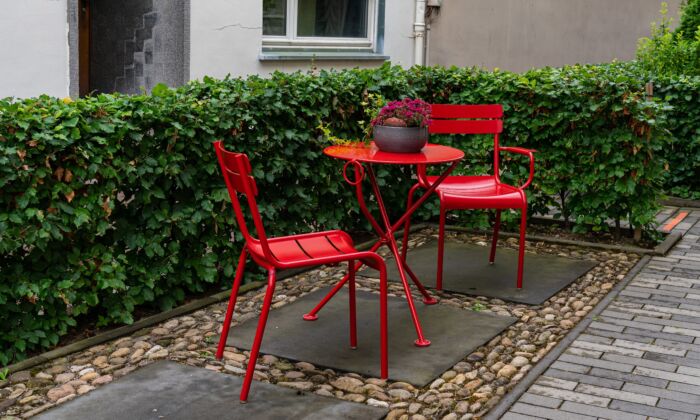
Source: theepochtimes.com
Maintaining the rust-resistant properties of your patio furniture requires consistent care and attention. Regular cleaning and preventative measures can significantly extend the lifespan of your outdoor set, preserving its aesthetic appeal and structural integrity. By understanding the specific needs of different materials and applying appropriate protective coatings, you can effectively combat the elements and maintain the beauty of your outdoor space.
Proper maintenance goes beyond simply keeping your patio furniture clean. It’s about actively protecting the material from the elements and preventing the formation of rust. This involves understanding the specific vulnerabilities of each material and implementing targeted cleaning and storage strategies. This section details essential maintenance and care strategies for rust-resistant patio furniture.
Importance of Regular Cleaning and Maintenance
Regular cleaning is crucial for preventing rust formation. Dirt, debris, and moisture trapped on the surface can accelerate oxidation, leading to rust. By regularly cleaning your patio furniture, you remove these contaminants and prevent them from damaging the underlying material. Furthermore, consistent maintenance helps identify and address minor issues early on, before they escalate into larger problems.
Cleaning Procedures for Different Materials
Different materials require different cleaning approaches. Here’s a breakdown of cleaning procedures tailored to various materials commonly used in rust-resistant patio furniture:
- Aluminum: Use a mild dish soap solution and a soft-bristled brush. Rinse thoroughly and dry immediately to prevent water spots. Avoid harsh chemicals or abrasive cleaners, which can damage the finish.
- Stainless Steel: A solution of mild dish soap and water is generally sufficient. For stubborn stains, a specialized stainless steel cleaner can be used. Ensure thorough rinsing and drying to prevent water spots. Avoid using abrasive cleaners or scouring pads.
- Powder-coated Steel: Use a mild detergent solution and a soft-bristled brush. Rinse thoroughly and dry completely to prevent water damage and rust formation. For heavy soiling, consider a power washer on a low setting, directed away from the structure’s welds.
- Composite Materials (e.g., WPC): Mild dish soap and water are generally sufficient for daily cleaning. For stubborn stains, a solution of mild detergent and water with a touch of bleach (if appropriate for the finish) can be used. Rinse thoroughly and dry completely.
Protective Coatings and Finishes
Various protective coatings and finishes are available for outdoor furniture. These coatings create a barrier against moisture and oxidation, thus extending the rust-resistant lifespan of the furniture. The effectiveness of these coatings depends on the quality of the material, application method, and environmental conditions.
- Powder Coating: This durable coating provides excellent protection against rust and weathering. Its robustness makes it suitable for high-traffic areas and challenging climates.
- Epoxy Coatings: Epoxy coatings offer exceptional chemical resistance and durability, protecting the underlying material from harsh weather conditions and other environmental factors.
- UV-Resistant Finishes: These finishes are designed to resist the damaging effects of ultraviolet (UV) radiation from sunlight, which can contribute to material degradation and rust.
Proper Storage and Protection During Inclement Weather
Protecting patio furniture during inclement weather is crucial for preserving its rust resistance. Covering the furniture with a waterproof cover when not in use, and storing it in a dry location when not in use, can greatly reduce exposure to moisture and harsh weather conditions. Proper storage also prevents the accumulation of debris and dirt, which can contribute to the development of rust.
Step-by-Step Cleaning and Maintenance Guide
| Step | Action | Illustration |
|---|---|---|
| 1 | Inspect for damage or loose parts. | Visual check for cracks, screws, or other issues. |
| 2 | Prepare cleaning solution (e.g., mild dish soap and water). | Mix an appropriate amount of soap and water in a bucket. |
| 3 | Apply solution gently using a soft-bristled brush or sponge. | Apply the solution to the surface, avoiding harsh scrubbing. |
| 4 | Rinse thoroughly with clean water. | Rinse thoroughly until no soap residue remains. |
| 5 | Dry completely with a clean towel or allow to air dry. | Dry the surface with a towel or let it air dry completely. |
| 6 | Apply protective sealant (if needed). | Apply sealant in thin coats. |
| 7 | Store in a dry location or cover with a waterproof cover. | Store in a dry location or cover with a protective cover during inclement weather. |
Summary
In conclusion, selecting rust-resistant patio furniture involves careful consideration of materials, design, and ongoing maintenance. By understanding the strengths and weaknesses of different materials, implementing smart design choices, and adhering to proper maintenance procedures, you can enjoy your outdoor space for years to come without the hassle of rust. This comprehensive guide equips you with the knowledge to make informed decisions and create a beautiful, durable, and rust-free outdoor haven.

